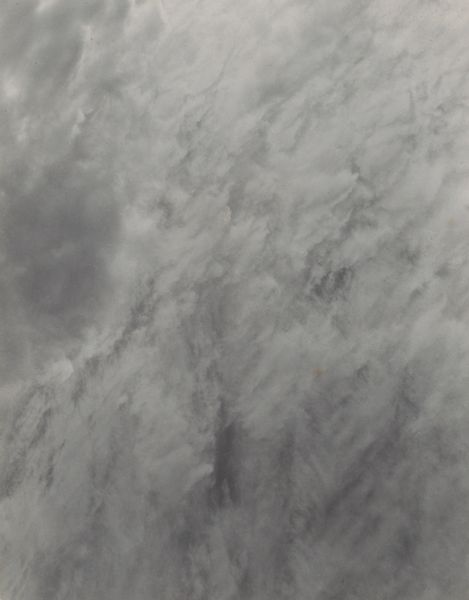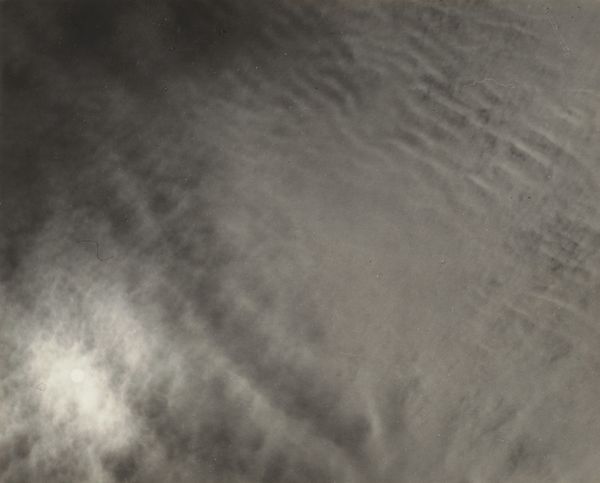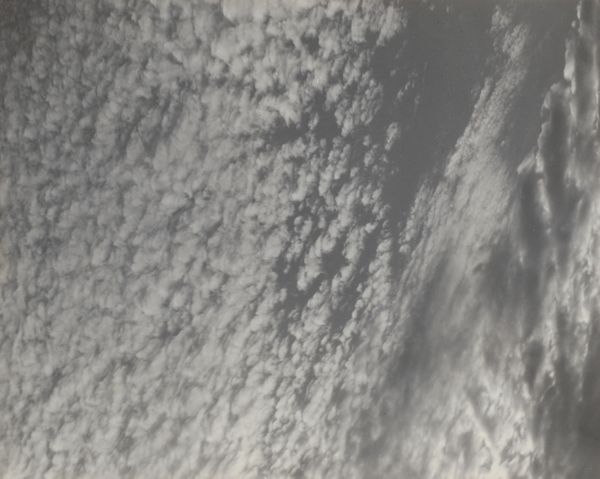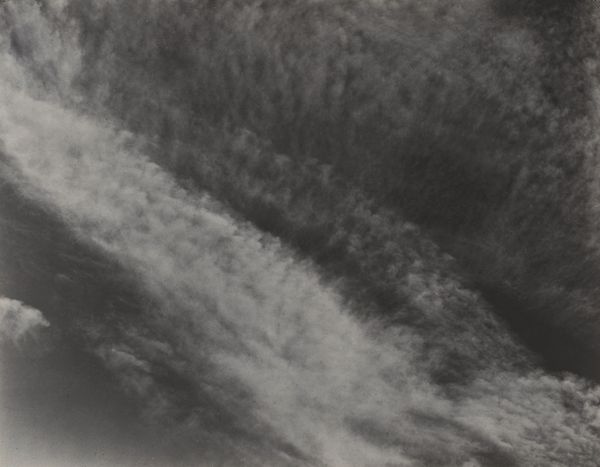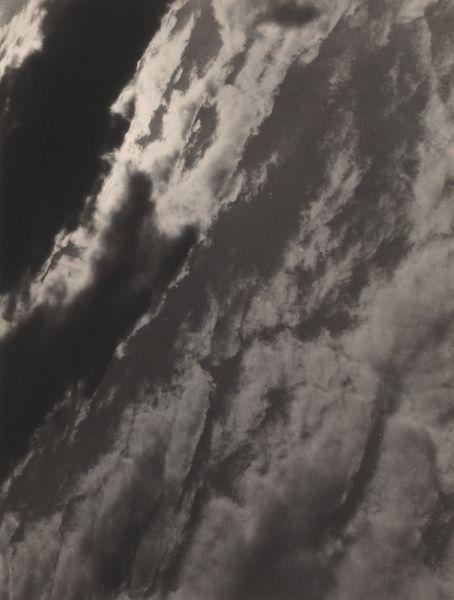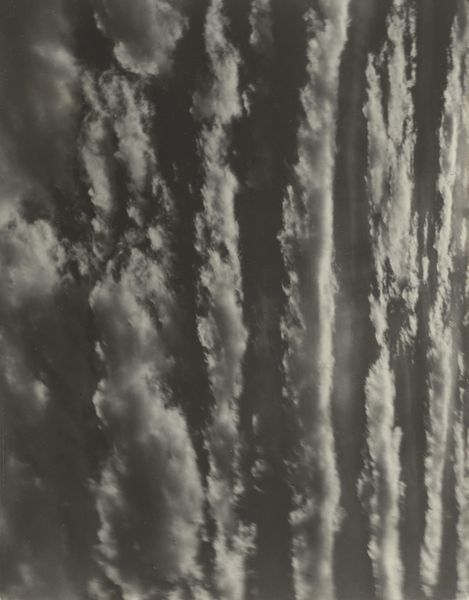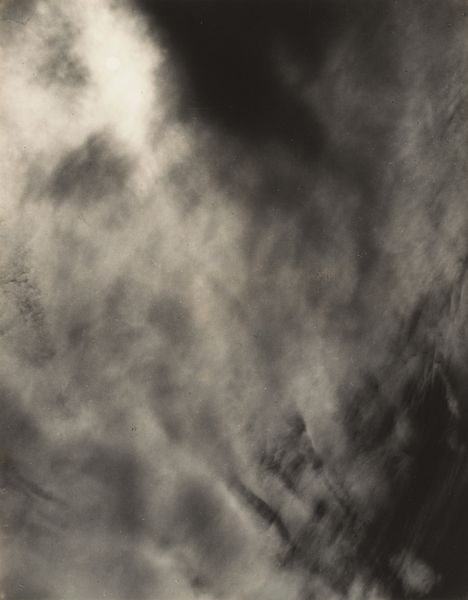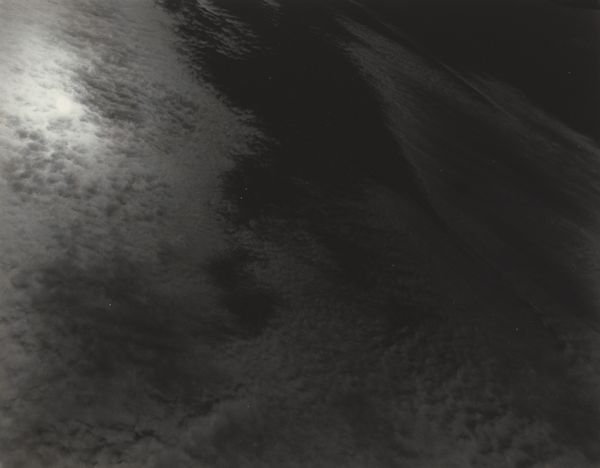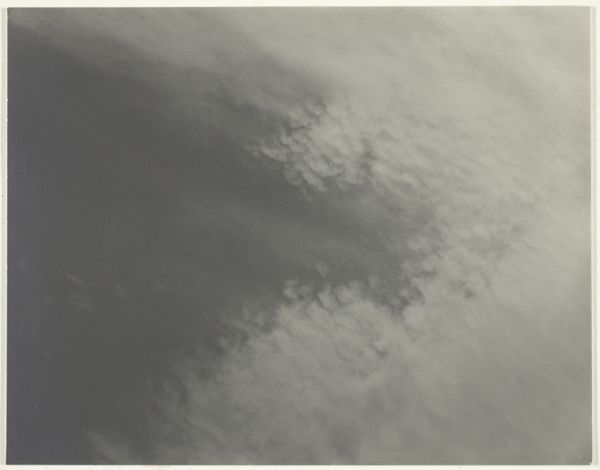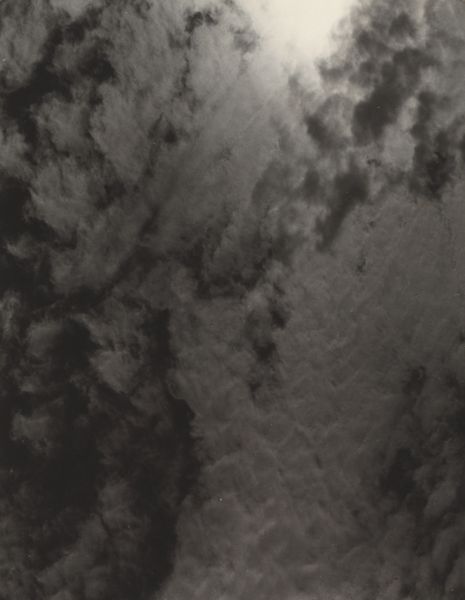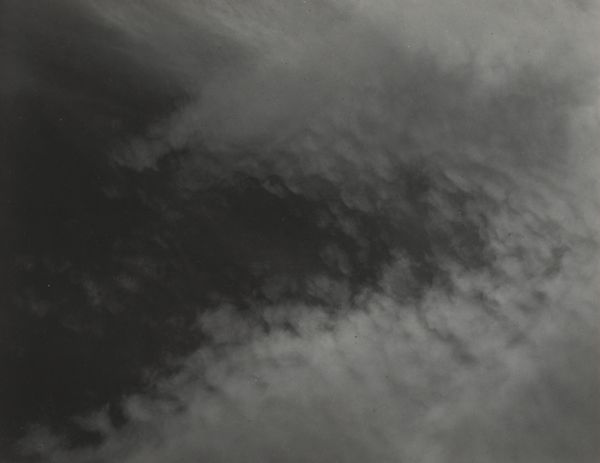
photography
#
still-life
#
black and white photography
#
pictorialism
#
landscape
#
photography
#
monochrome photography
#
abstraction
#
monochrome
#
monochrome
Dimensions: sheet (trimmed to image): 11.8 x 9.1 cm (4 5/8 x 3 9/16 in.) mount: 33.8 x 27.2 cm (13 5/16 x 10 11/16 in.)
Copyright: National Gallery of Art: CC0 1.0
Curator: Standing before us is Alfred Stieglitz’s "Equivalent," a photograph he captured around 1925. Editor: My initial reaction is… ethereal. The tones and soft focus almost dematerialize the subject. It feels like a study in light and texture, divorced from anything concrete. Curator: And that’s very much the point. Stieglitz, disillusioned with the art world and its obsession with European styles, aimed to create photographs that were purely expressive, visual equivalents of his own emotional states. He declared these cloud studies were equivalent to his life experiences. Editor: So the content here is essentially absent, allowing for an exploration of pure form? Note the diagonal thrusts across the frame, softened by the almost milky gradations of tone. Is there a suggestion of dynamism, or is it static? Curator: Exactly! And in the context of the roaring twenties, this abstraction was a bold statement. Many artists, influenced by psychoanalysis, were exploring the subconscious. Stieglitz was saying photography could transcend documentation and become a conduit for inner emotions. His shift reflects a larger societal search for authenticity amidst rapid change. Editor: Yet he chose clouds, a traditional landscape element. Were these images considered revolutionary during his time, given they appear traditional in form but conceptual at their core? I observe how Stieglitz manipulates the tones—how the lighter tones sit over a dark ground as diagonals that almost meet the corner— Curator: Absolutely. While pictorialism was a major trend that romanticized photographs of landscapes by including clouds, what set Stieglitz’s cloud photographs apart from similar artworks was that these “equivalents” functioned as inner reflections—they broke all associations with traditional symbolism and imagery. This pursuit for a new way to experience image-making directly impacted a future generation of abstract photographers. Editor: Stieglitz really pushes the boundaries of the medium through its tonal range and texture. After our discussion, my feeling now is closer to acceptance: in accepting nature, he created an equivalent for himself through the photographic process. Curator: Yes, and recognizing that intentionality, we begin to perceive “Equivalent” not just as an abstract exercise, but as a powerful assertion of the artist's presence.
Comments
No comments
Be the first to comment and join the conversation on the ultimate creative platform.

